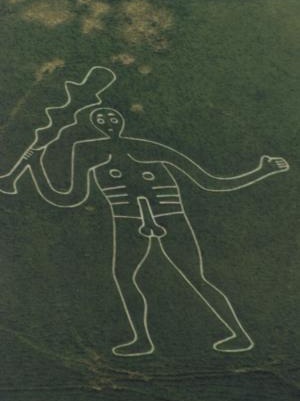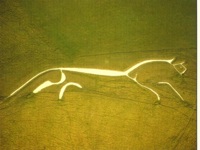
Watching the Open University with Courtney late last night was the first time I’ve ever heard anyone exclaim “Ooh! Geology! Fun!” without a hint of irony.
But she was right; it was fun. The programme explored the origins of chalk carvings, including the Uffington horse, the Long Man of Wilmington and my favourite, the Cerne Abbas Giant.
It turns out that the giant isn’t the bronze-age fertility god that many thought him to be. He owes his creation to more recent history – the English civil war, in fact. Oliver Cromwell’s supporters often called him “the English Hercules,” and at Higham castle there is a statue depicting Cromwell in the classical Herculean form, bearing a club and completely nude, except for an improbable piece of robe fluttering around his delicates.
Lord Denzil Holles, a fierce opponent of Cromwell, is thought to have commissioned the Cerne Abbas Giant for satirical purposes. If this is the case, the Giant’s impressively erect phallus can be seen to mock Cromwell’s lust for power and his Puritan prudishness.
Certainly this isn’t the story that new-agers want to hear. One especially dippy website, which claims that a well just below the giant “has a wonderful feminine energy that balances the power of the male god on the hill above,” and makes no mention of the more recent theory. However, even without the scientific evidence which dates the carving to the seventeenth century, I would argue that the lines and form of the Giant are a significant clue.

The Uffington Horse, a genuine bronze age artefact, is a very abstract form. The giant bears no stylistic resemblance to the horse, looking rather like a cartoon. Political cartooning was already a common form in seventeenth century Britain. It seems clear to me that even if he has outlived his intended purpose, the club-wielding giant lives on as a symbol of bawdy satire. And as a pattern on biscuits.

19/10/2007
And as an integral part of Terry Pratchett’s discworld novel – Wintersmith I think. He suggests it’s not a picture of a horse, but of what a horse ‘is’.